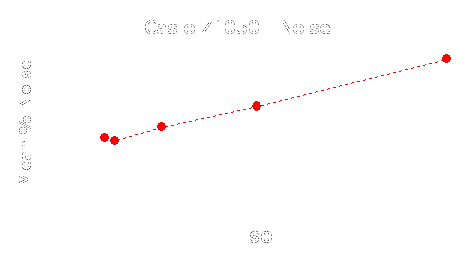Your Fridge Uses More Electricity than the Average Tanzanian
Energy efficiency is an important factor in buying decisions, but how much does it impact your energy footprint?
 Credit:
Credit:
Products are chosen independently by our editors. Purchases made through our links may earn us a commission.
A recent post by Todd Moss for the Center for Global Development has been making the rounds this week. In it, Moss draws upon World Bank data to compare the average annual energy use of a household refrigerator—specifically, his—to that of common citizens in underdeveloped countries like Nigeria, Ghana, and Tanzania.
According to the World Bank, the average U.S. citizen consumes about 13,395 kWh per year, while his or her refrigerator draws roughly 500 kWh of that total. Now compare that to the total annual power consumption of the average person in Nigeria (135 kWh), or Ghana (299 kWh), or Bangladesh (274 kWh). Those figures are considerably less than even the most energy efficient fridge we’ve ever tested.

Okay, I know what you’re thinking: Those countries are all energy scarce—not to mention, agricultural and impoverished. It makes sense that electricity consumption in these regions would be meager. This is true, but it does put things in perspective, no?
Another point to consider is the developing world and how, by definition, it will continue to consume larger and larger swaths of power—straining the global grid and raising demand for home appliances. In North Korea, for instance, refrigerators are now viewed as a status symbols, much like a Bentley would be in the U.S. The point isn't that efficient appliances need only satisfy their owners' utility bills, but that a more global perspective on how products drain energy is needed.
Energy consumption is an incredibly important factor for any appliance purchase, but as a slice of one’s overall environmental impact, the difference between, say, the highly efficient Kenmore 78892 (383 kWh per year) and the comparatively inefficient Whirlpool WRL767SIAM (552 kWh per year) is negligible.
Contrastingly, when it comes to saving you money on your energy bill, that difference is significant. Our tests show that the above mentioned Kenmore will cost you about $35.33 per year to operate, while the Whirlpool will cost $63.18.
What does all this mean? Essentially, the prospect of significantly reducing your environmental impact is lofty, to say the least—unless of course you move off the grid into a shack in rural New Hampshire a la Walter White. But that doesn’t mean you can’t save money on your personal utility bills by choosing more efficient products. And, more importantly, the collective power of consumers to “go green” can certainly benefit the environment. This is a good reason for manufacturers to invest in green products and practices that will financially benefit their customers.
[Via: Washington Post]
